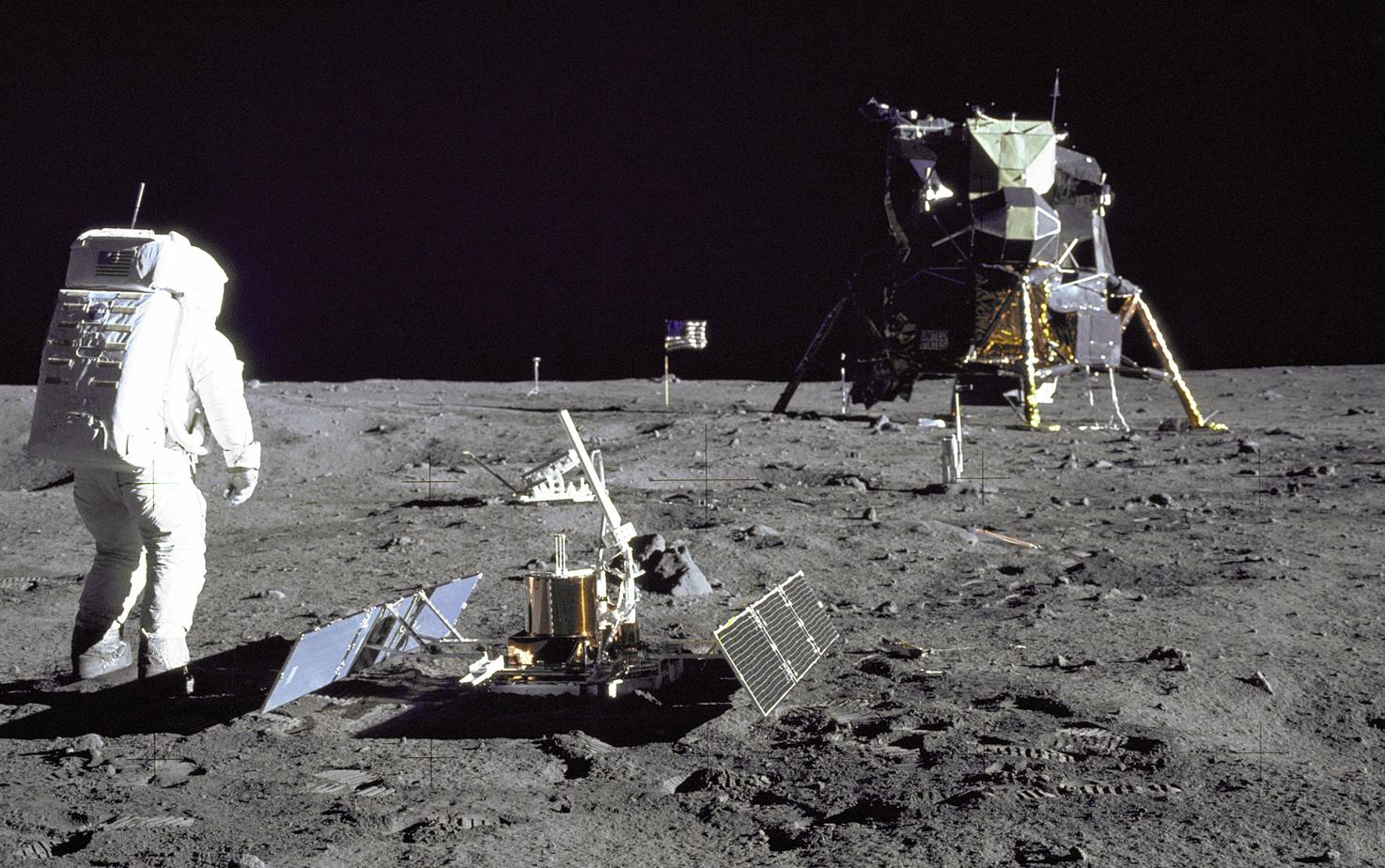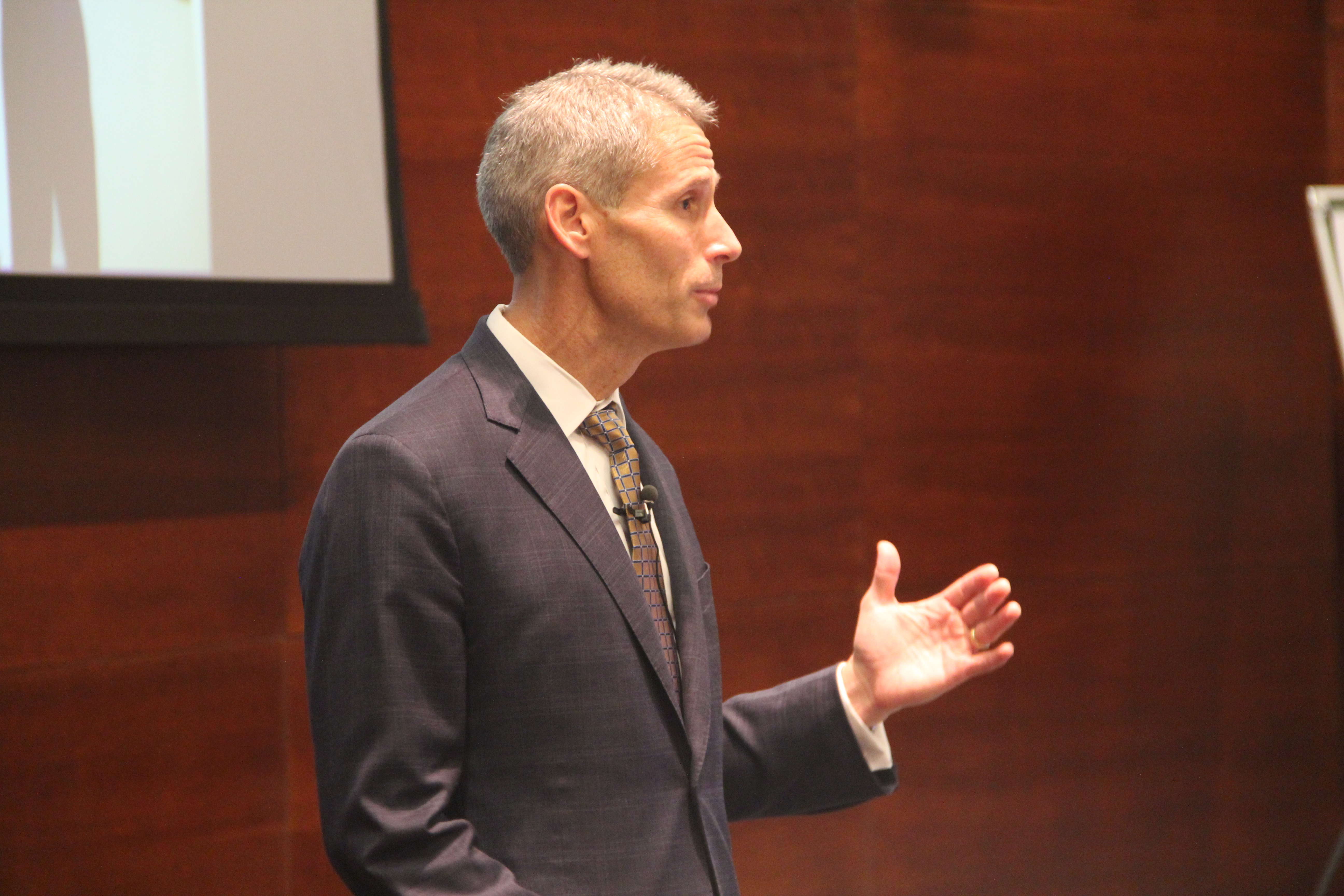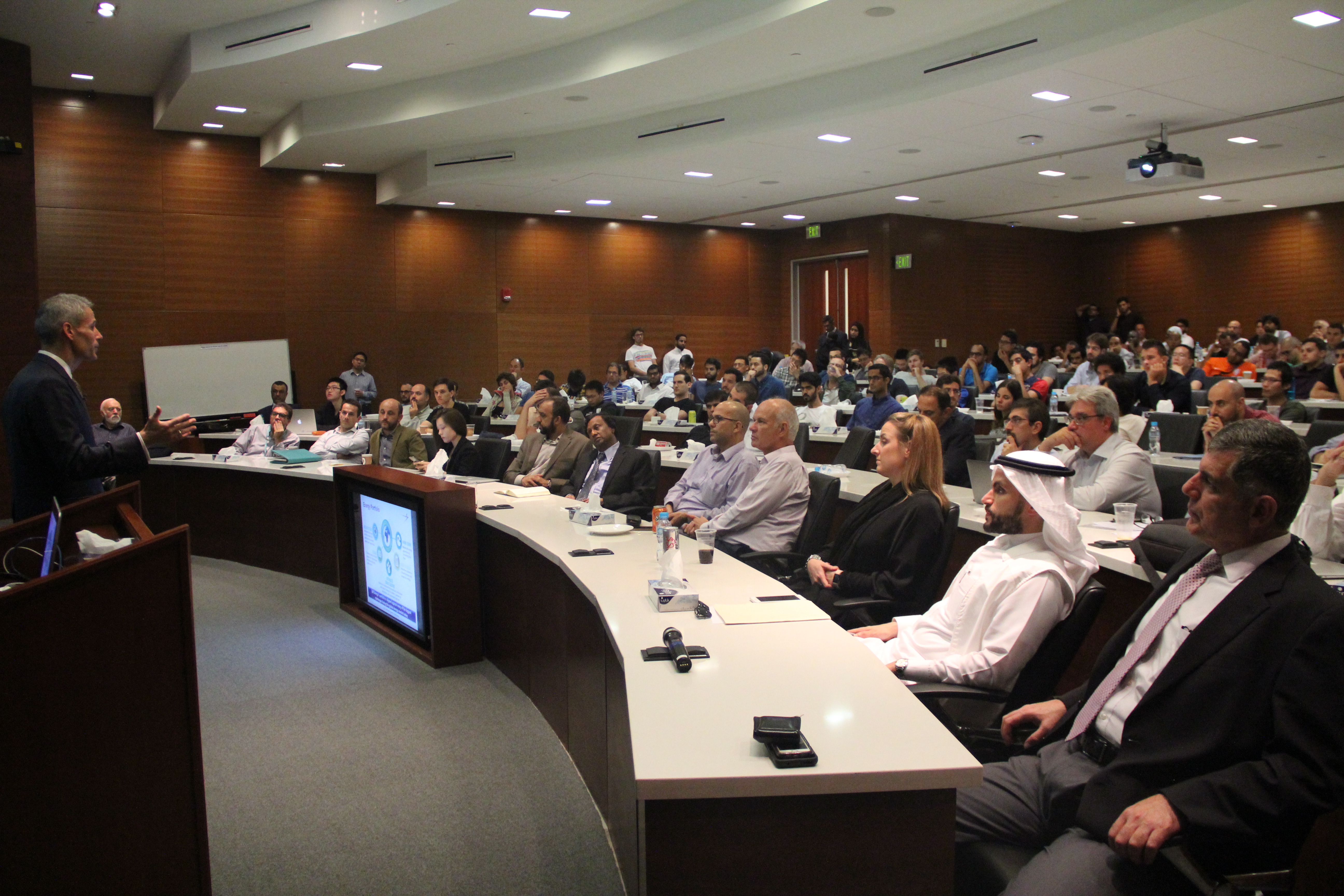A Space Age-inspired career in collaborative R&D

Dr. Dana Jackson cited the Apollo 11 moon landing in 1969 as inspiration for his career in science and technology. Pictured here is U.S. astronaut Buzz Aldrin on the moon on July 20, 1969. Photo courtesy of NASA.
On July 20, 1969, U.S. astronauts Buzz Aldrin and Neil Armstrong walked on the moon, becoming the first humans to set foot on the lunar surface as part of the historic Apollo 11 mission. The mission was a milestone in the Space ge, which began with the launch of Sputnik I, the world’s first artificial satellite, by the Soviet Union. The Space Age ushered in a series of new military, political, technological and scientific developments around the world.
“I was inspired by the astronauts going to the moon, and I came of age in my engineering career at the height of the Space Age,” noted Dr. Dana Jackson during a lecture at KAUST on October 22. Jackson is the chief technology officer (CTO) at Lockheed Martin.
“The space programs were a huge inspiration to me, and ultimately I wanted to work on the very large space programs that inspired me in high school and college,” he said.

Jackson’s dreams became reality when he was hired as a U.S. National Aeronautics and Space Administration (NASA) research fellow at MIT, where he worked in the field of human adaptation to the space environment. In his later career at Lockheed Martin, he became vice president for Program Excellence, where he integrated five corporate councils for engineering and technology, production, program management, supply chain and sustainment.
As CTO, he acts as the company’s primary liaison to the U.S. and international science and technology community, and manages key relationships with industry, government and academia to ensure the smooth development, maturation and deployment of cutting-edge technologies.
Lockheed Martin is a strategic partner of the University’s Industry Collaboration Program (KICP), and its Chairman, President and CEO Marillyn A. Hewson sits on the KAUST Board of Trustees. The company engineers transformative technologies that help advance global security and solve some of the world’s greatest challenges. Its interests now lie in partnering with universities, small and medium enterprises (SMEs) and research labs worldwide to bring disruptive technologies to bear fruit more quickly.
In his lecture, Jackson outlined the company’s operations and four major focus areas—autonomy and robotics; transformative computing and cybersecurity; signal processing and communications; and sensor technology—and how these areas advance the company’s technology strategy. He also discussed Lockheed Martin’s goals of fostering collaborations around the world.

“Lockheed Martin is about solving large and complex technological problems,” Jackson said. “We are a technology company focused on problems that occur at scale, and we apply suites of technologies to solve these very challenging problems.”
“We realized we needed to look more broadly to bring technology into the organization—we needed to look at small startup companies and at universities with innovative technologies located not just in the U.S. but around the world,” he continued. “Research and technology development is a global landscape today, and what you do at KAUST is a microcosm of that landscape. We need to scan that entire landscape.”
'Mission success'
Lockheed Martin is a “worldwide leader,” Jackson said, “and because of that, we have to take from worldwide opportunities to ensure leadership in different areas. We strive for 100 percent ‘mission success’ in all that we do.”
Bringing together diverse people from different disciplines to examine different understandings of systems is a key to the company’s success, as these individuals come up with “non-obvious solutions,” he added. “Our people think back to the ‘mission applications’ of each project to do something really different and disruptive.”
“I’m always excited to work on a program or a technology that solves problems and touches millions of people every day,” he said. As his work continues across Lockheed Martin’s “broad portfolio that stretches from the depths of the oceans to outer space,” he noted, he moves ahead with the same curiosity that led him from his engineering studies during the Space Age to his current role.
“I see boundless opportunities across our portfolio as we look around the world to expand our collaborative R&D platform,” Jackson added. “These opportunities for global collaboration just depend on the technologies in development here at the University.”
On July 20, 1969, U.S. astronauts Buzz Aldrin and Neil Armstrong walked on the moon, becoming the first humans to set foot on the lunar surface as part of the historic Apollo 11 mission. The mission was a milestone in the Space ge, which began with the launch of Sputnik I, the world’s first artificial satellite, by the Soviet Union. The Space Age ushered in a series of new military, political, technological and scientific developments around the world.
“I was inspired by the astronauts going to the moon, and I came of age in my engineering career at the height of the Space Age,” noted Dr. Dana Jackson during a lecture at KAUST on October 22. Jackson is the chief technology officer (CTO) at Lockheed Martin.
“The space programs were a huge inspiration to me, and ultimately I wanted to work on the very large space programs that inspired me in high school and college,” he said.
Dr. Dana Jackson, chief technology officer at Lockheed Martin, speaks to the KAUST community about the company's goals in collaborative R&D at a lecture on campus on October 22. Photo by Manal Alotaibi.
Jackson’s dreams became reality when he was hired as a U.S. National Aeronautics and Space Administration (NASA) research fellow at MIT, where he worked in the field of human adaptation to the space environment. In his later career at Lockheed Martin, he became vice president for Program Excellence, where he integrated five corporate councils for engineering and technology, production, program management, supply chain and sustainment.
As CTO, he acts as the company’s primary liaison to the U.S. and international science and technology community, and manages key relationships with industry, government and academia to ensure the smooth development, maturation and deployment of cutting-edge technologies.
A strategic partnership
In his lecture, Jackson outlined the company’s operations and four major focus areas—autonomy and robotics; transformative computing and cybersecurity; signal processing and communications; and sensor technology—and how these areas advance the company’s technology strategy. He also discussed Lockheed Martin’s goals of fostering collaborations around the world.
Dr. Dana Jackson, chief technology officer at Lockheed Martin, speaks to the KAUST community about the company's goals in collaborative R&D at a lecture on campus on October 22. Photo by Manal Alotaibi.
“Lockheed Martin is about solving large and complex technological problems,” Jackson said. “We are a technology company focused on problems that occur at scale, and we apply suites of technologies to solve these very challenging problems.”
“We realized we needed to look more broadly to bring technology into the organization—we needed to look at small startup companies and at universities with innovative technologies located not just in the U.S. but around the world,” he continued. “Research and technology development is a global landscape today, and what you do at KAUST is a microcosm of that landscape. We need to scan that entire landscape.”
'Mission success'
Bringing together diverse people from different disciplines to examine different understandings of systems is a key to the company’s success, as these individuals come up with “non-obvious solutions,” he added. “Our people think back to the ‘mission applications’ of each project to do something really different and disruptive.”
‘Long-term collaborations’“
At KAUST, we are looking at the broad opportunities to develop long-term collaborations,” Jackson noted. “To take on the best capabilities and apply them to our problems, we have to partner with the best commercial entities and the best universities worldwide. We look at the broader ecosystem—including the global university ecosystem—as we expand our footprint globally.
“I’m always excited to work on a program or a technology that solves problems and touches millions of people every day,” he said. As his work continues across Lockheed Martin’s “broad portfolio that stretches from the depths of the oceans to outer space,” he noted, he moves ahead with the same curiosity that led him from his engineering studies during the Space Age to his current role.
“I see boundless opportunities across our portfolio as we look around the world to expand our collaborative R&D platform,” Jackson added. “These opportunities for global collaboration just depend on the technologies in development here at the University.”

